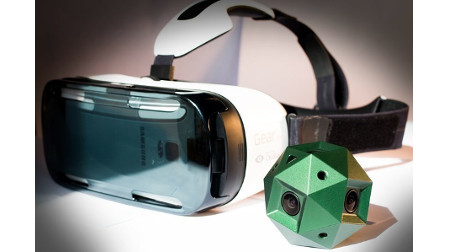VR Advocate Predicts $27B to be Spent on Format in 2018
AMSTERDAM-- The future for virtual reality will be bright, if its quality continues to improve, said Rob Koenen, president of the VR Industry Forum (VRIF), during a “Masterclass on VR Technology and Industry” at the 2018 IBC Show.
Koenen looked back to the first generation of “pricey” and “clumsy” VR headphones which forced users to require expensive computers. By contrast, he said the newest wave offers standalone, VR headphones for under $200, with no wires or computers required to operate.

“Consumers and businesses alike are interested in VR and a healthy ecosystem is developing, but for it to be truly successful it needs to reach enough people, deliver a cinematic-type experience and be affordable to distribute,” Koenen said.
Koenen pointed to the progress at VRIF demonstrations at IBC’s Future Zone as an example of the format’s progress. Those included high-quality live VR360 streaming, tools for the production and playback of streaming VR360 based on the MPEG Omnidirectional Media Format (“OMAF”) and MPEG‑H spatial audio.
“Live services will be key to the success of VR; they take the VR experience to the next level,” Koenen said. “They are a now key focus for VRIF and we will document recommendations for live VR in the upcoming version of our Guidelines, which is scheduled for publication in January 2019.”
Koenen also seemed optimistic about the use of VR applications outside of entertainment, such as in healthcare and training.
“Forecasts for VR are good – IDC, for example, expects spending on AR and VR products and services to reach $27 billion in 2018 – but there is still work to be done,” said Koenen. “To ensure these projections are delivered, the industry needs to come together to focus on creating interoperable, high-quality services which are accessible and bring true value to end users.”
The professional video industry's #1 source for news, trends and product and tech information. Sign up below.
VRIF members include Qualcomm, Sky, Sony, Verizon and more.
